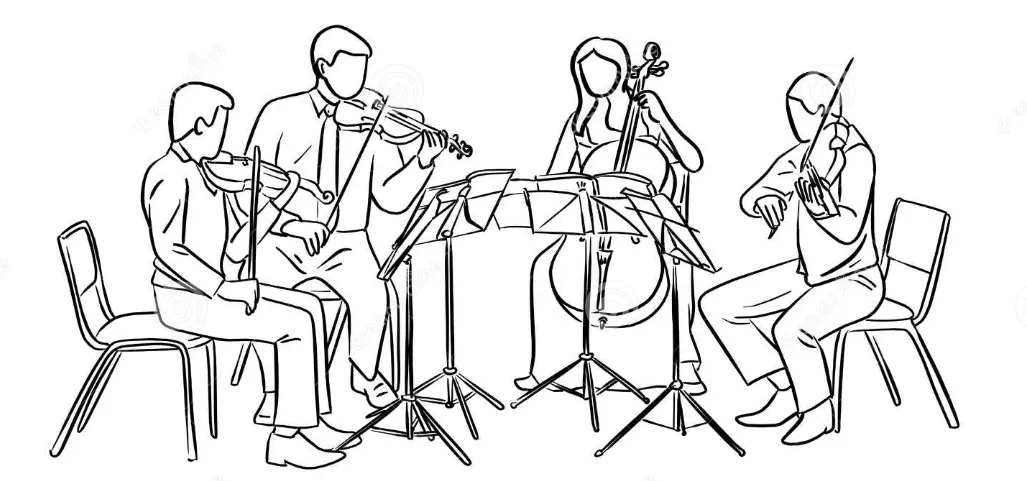Conceptual Foundations of Collaboration
The Conceptual Foundations of Collaboration Are Actionable — and Powerful
Section titled “The Conceptual Foundations of Collaboration Are Actionable — and Powerful”In today’s fast-evolving world, collaboration is more than just working together—it’s the engine of innovation, resilience, and shared success. But what underlies effective collaboration? How do decentralized teams and organizations move beyond meetings and good intentions to truly thrive?
The answer lies in deep, conceptual foundations—foundations that aren’t abstract or theoretical, but highly actionable and powerful. Drawing on eight essential patterns of collaboration, we can understand how to cultivate the conditions that make collective work not just possible, but vibrant and productive.
1. Awareness: Seeing the System and Ourselves Clearly
Section titled “1. Awareness: Seeing the System and Ourselves Clearly” Collaboration begins with awareness—the conscious understanding of what’s happening both within ourselves and in the collective. Without this, teams operate in the dark, missing cues, blind spots, and emerging tensions. Awareness creates the shared situational understanding that enables timely, aligned action.
Collaboration begins with awareness—the conscious understanding of what’s happening both within ourselves and in the collective. Without this, teams operate in the dark, missing cues, blind spots, and emerging tensions. Awareness creates the shared situational understanding that enables timely, aligned action.
2. Motivation: The Drive That Moves the Collective
Section titled “2. Motivation: The Drive That Moves the Collective”While awareness reveals the landscape, motivation fuels the journey. At the organizational level, motivation means creating shared drivers that inspire groups to move forward together. It’s about aligning purpose and desire so that teams don’t just coordinate but are energized to innovate and persevere.
3. Self-Synchronization: Harmonizing Without Central Control
Section titled “3. Self-Synchronization: Harmonizing Without Central Control” In decentralized systems, waiting for orders is neither feasible nor efficient. Self-synchronization empowers individuals and teams to align their rhythms and actions organically, responding to shared signals and emergent needs. This pattern reduces friction and accelerates coordinated progress.
In decentralized systems, waiting for orders is neither feasible nor efficient. Self-synchronization empowers individuals and teams to align their rhythms and actions organically, responding to shared signals and emergent needs. This pattern reduces friction and accelerates coordinated progress.
4. Mediation: Holding Agreements in the Space Between
Section titled “4. Mediation: Holding Agreements in the Space Between”Collaboration is not about imposing will, but about mediation—recognizing that agreements live in the liminal space between people, suspended yet anchored by all sides. This perspective fosters respect, flexibility, and shared responsibility, allowing agreements to evolve as the system changes.
5. Reciprocity: The Vital Flow of Energy and Resources
Section titled “5. Reciprocity: The Vital Flow of Energy and Resources”Healthy collaboration depends on reciprocity, the natural, balanced flow of energy and resources between participants. When giving and receiving are mutual and unforced, relationships flourish, trust deepens, and the system gains resilience. Ignoring reciprocity risks burnout, resentment, and disconnection.
6. Reflection: Seeing Ourselves as Whole and Exploring Alternatives
Section titled “6. Reflection: Seeing Ourselves as Whole and Exploring Alternatives”At times, we need to pause and look inward and outward with fresh eyes. Collaborative reflection offers this space—both at the individual and collective level—to see ourselves whole, acknowledge patterns, and consider alternatives. Reflection is the root of learning, innovation, and adaptive change.
7. Participation: Surfacing Expectations and Presence
Section titled “7. Participation: Surfacing Expectations and Presence”Beyond engagement or action, participation is about showing up fully and surfacing expectations—both our own and those of the system. When members clearly voice and negotiate these expectations, collaboration gains clarity, alignment, and reduces hidden tensions.
8. Engagement: Taking Initiative and Moving Forward Together
Section titled “8. Engagement: Taking Initiative and Moving Forward Together”Finally, collaboration demands engagement—the courage to take initiative, take risks, and act collectively. Engagement transforms potential into momentum, turning ideas into outcomes. When teams cultivate this active commitment, they unlock innovation and sustained progress.
Bringing It All Together
Section titled “Bringing It All Together”These eight patterns—awareness, motivation, self-synchronization, mediation, reciprocity, reflection, participation, and engagement—are not just concepts but practical touchstones for building thriving collaborative systems. They invite us to design interactions, roles, and cultures that:
-
Illuminate what’s happening (awareness)
-
Energize shared purpose (motivation)
-
Align action naturally (self-synchronization)
-
Honor agreements as living relationships (mediation)
-
Keep energy flowing mutually (reciprocity)
-
Learn and evolve continuously (reflection)
-
Make expectations visible (participation)
-
Inspire courageous action (engagement)
Together, they create a dynamic foundation that turns collaboration from a hopeful ideal into a powerful, living practice.
Your Next Step
Section titled “Your Next Step”Consider which of these patterns your team or organization already embraces—and which might need more attention. Experiment with practices that bring these patterns to life, and watch how your collaboration becomes not only more effective but deeply fulfilling.
Collaboration is a human art—and these patterns are the palette. Use them to paint your collective masterpiece.